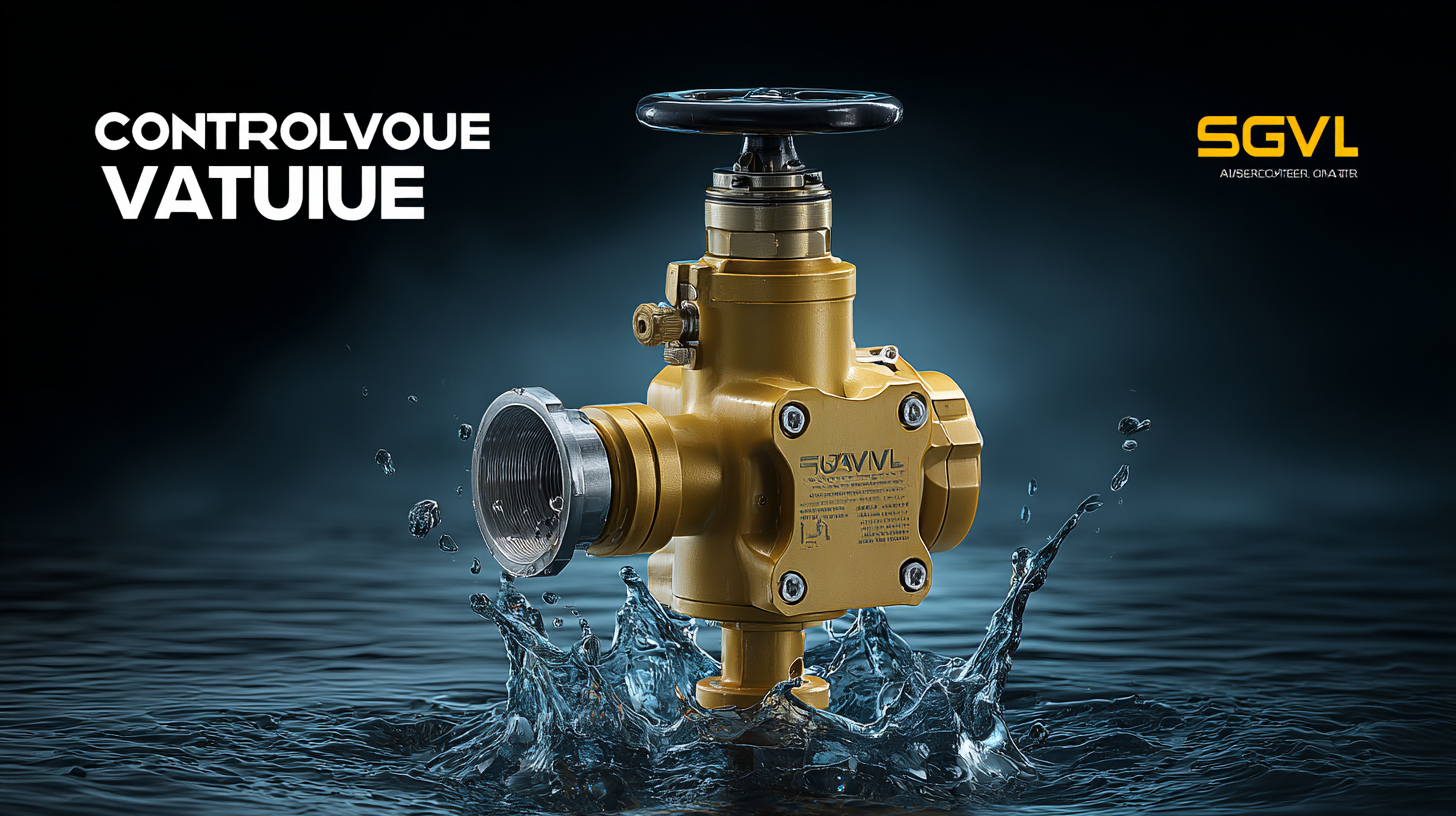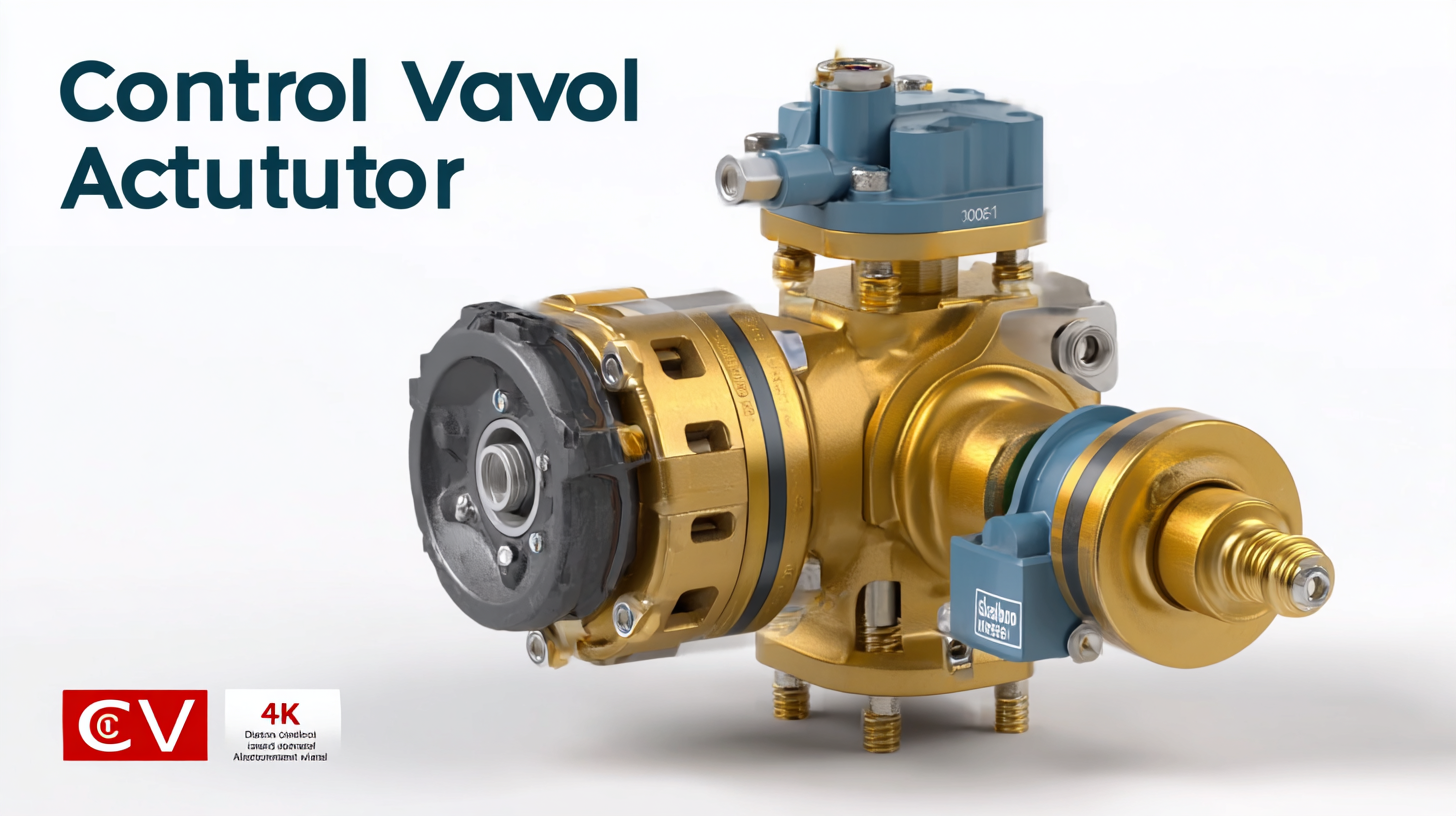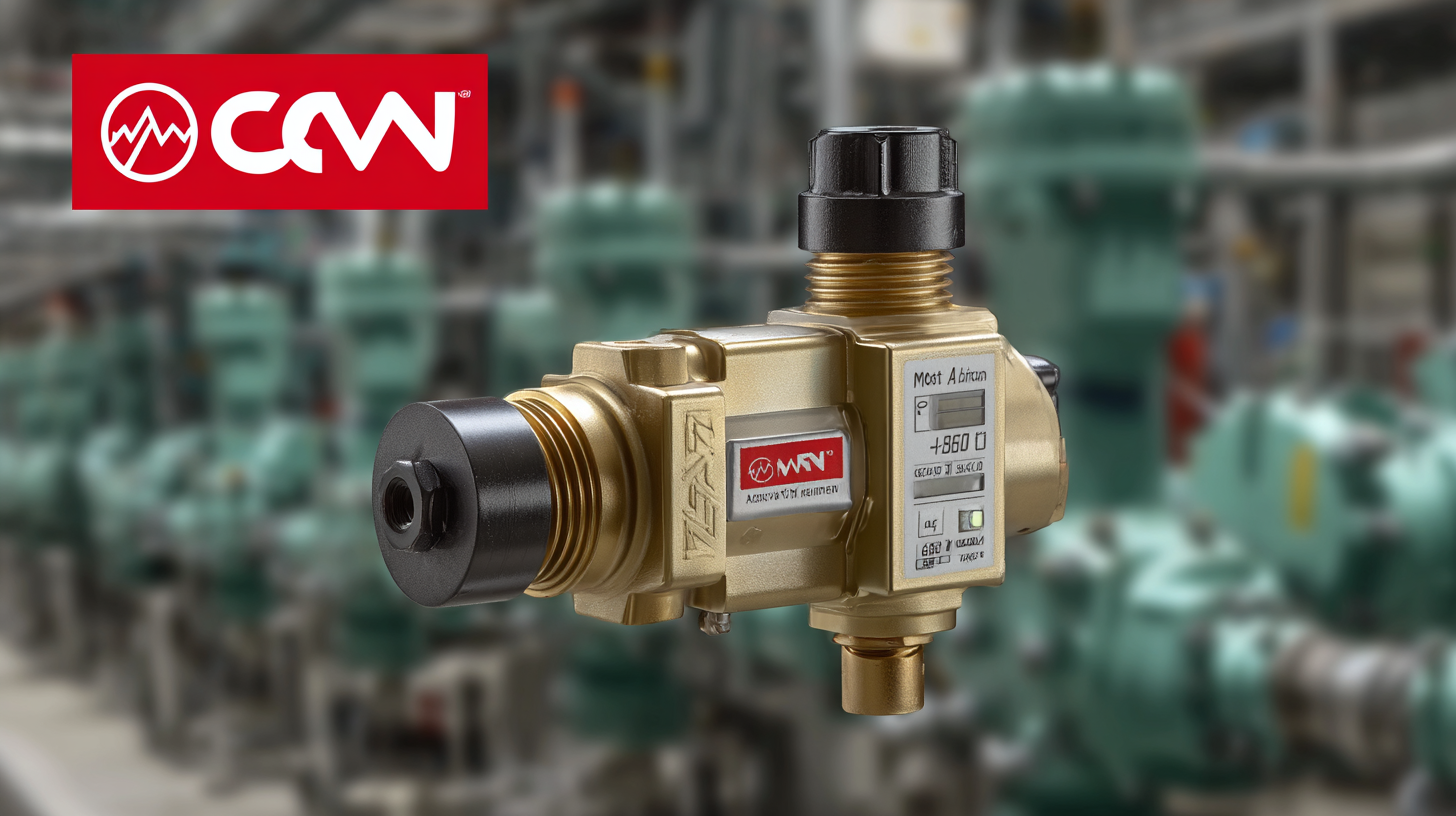Top Strategies for Selecting the Best Control Valve Actuator in a Global Market
In the ever-evolving landscape of industrial automation, selecting the best Control Valve Actuator is crucial for ensuring efficiency and reliability in various applications. With a diverse range of options available in the global market, understanding the key factors that influence this selection process becomes imperative for engineers and decision-makers. This blog will explore compelling industry case studies that highlight successful implementations of Control Valve Actuators across different sectors, revealing the critical numerical data that underscores their performance.
By examining the reasons why choosing the right actuator matters, we aim to provide insights that will guide professionals in making informed decisions tailored to their specific operational needs. Whether it's optimizing processes in chemical manufacturing or enhancing safety in oil and gas applications, the right Control Valve Actuator can significantly impact productivity and system integrity.
Key Factors Influencing Control Valve Actuator Selection in Global Markets
Selecting the right control valve actuator is essential for optimizing performance in today's competitive global market. Key factors influencing this selection include the type of operation, energy efficiency, and regulatory compliance. As industries increasingly prioritize automation and energy efficiency, the demand for innovative electric valve actuators has surged. According to recent market research, sales in the global electric valve actuator market are projected to reach approximately $17.35 billion by 2023, driven by industrial automation and smart technology requirements.
When choosing a control valve actuator, consider the specific operational conditions and the actuator's compatibility with existing systems. It's beneficial to evaluate the actuator's energy consumption to ensure it aligns with both efficiency goals and environmental regulations.
Tip: Always assess supplier reliability and product support to ensure you are choosing a durable and effective actuator. Moreover, the global aerospace fasteners market is expected to grow from $72 billion in 2024 to $127.6 billion by 2032, highlighting the potential for cost-effective solutions and the impact of strategic technological advancements in valve actuator designs. This trend indicates that selecting the right actuator can lead to significant long-term operational savings.
Top Strategies for Selecting the Best Control Valve Actuator
Understanding the Different Types of Control Valve Actuators and Their Applications
When selecting a control valve actuator, it's crucial to understand the various types available and their specific applications. Control valve actuators can be broadly categorized into three main types: pneumatic, electric, and hydraulic actuators. Pneumatic actuators are favored for their quick response times and reliability, making them ideal for applications in industries such as oil and gas or chemical processing, where rapid actuation is necessary. They often operate in environments where safety and resilience against extreme conditions are paramount.
Electric actuators, on the other hand, have gained popularity due to their energy efficiency and ease of integration with modern automated systems. They are particularly suitable for processes requiring precise control and minimal maintenance. Applications may include HVAC systems or water treatment facilities. Hydraulic actuators, known for their power and ability to handle large loads, are commonly employed in applications demanding high torque, like heavy machinery or large valves in power plants. Understanding the unique strengths of each actuator type aids in making informed decisions that enhance system efficiency and reliability.
Top Strategies for Selecting the Best Control Valve Actuator in a Global Market
| Actuator Type |
Operating Principle |
Best Applications |
Advantages |
Limitations |
| Electric |
Electrical signals |
Chemical processing, water treatment |
Precise control, low maintenance |
May require more space, can be sensitive to power loss |
| Pneumatic |
Compressed air |
Oil and gas, HVAC systems |
Fast action, robust |
Air supply needed, can be less precise |
| Hydraulic |
Hydraulic fluid |
Heavy industry, power generation |
High force output, suitable for large valves |
Complex systems, potential for fluid leaks |
| Smart |
Digital feedback and control |
Refineries, smart factories |
Integration with automation systems, real-time monitoring |
Higher cost, dependency on technology |
Market Trends: Growth Projections for the Control Valve Actuator Industry by 2025
 The control valve actuator industry is poised for significant growth as we head into 2025, driven by an increased demand across various sectors, including oil and gas, water treatment, and manufacturing. With the rise of automation and digitization in industrial processes, companies are investing more in advanced control systems that enhance efficiency and reliability. This trend is reflected in the continuous evolution of actuator technologies, with innovations like electric and pneumatic actuators gaining traction due to their precise control characteristics and energy efficiency.
The control valve actuator industry is poised for significant growth as we head into 2025, driven by an increased demand across various sectors, including oil and gas, water treatment, and manufacturing. With the rise of automation and digitization in industrial processes, companies are investing more in advanced control systems that enhance efficiency and reliability. This trend is reflected in the continuous evolution of actuator technologies, with innovations like electric and pneumatic actuators gaining traction due to their precise control characteristics and energy efficiency.
Market projections indicate a compound annual growth rate (CAGR) of over 6% in the control valve actuator sector. This growth is fueled by the need for improved process control and the integration of smart technologies in industrial applications. Furthermore, manufacturers are focusing on developing actuators that are not only more efficient but also capable of communicating with other smart devices, thus enhancing operational flexibility. As industries adapt to new challenges and prioritize sustainability, selecting the right actuator will be crucial to leverage these emerging opportunities, ensuring organizations remain competitive in a rapidly evolving global market.
Evaluation Criteria: Key Performance Indicators for Assessing Control Valve Actuators
When selecting control valve actuators in a global market, understanding key performance indicators (KPIs) is crucial for ensuring optimal operation and reliability. These evaluation criteria not only facilitate informed decision-making but also enhance the overall efficiency of control systems. An essential KPI to consider is the actuator's response time, which measures how quickly the actuator can respond to control signals. Faster response times ensure that processes remain stable and efficient, particularly in dynamic environments where conditions change rapidly.
Another important evaluation criterion is torque output, which defines the actuator's ability to properly position the valve against process pressures. It is vital to match the torque requirements of the valve with the actuator's specifications to avoid performance issues. Additionally, assessing the actuator's durability and maintenance needs can greatly impact long-term operational costs and system downtime. By prioritizing these KPIs, engineers and procurement professionals can better navigate the complexities of the global market and select actuators that meet their specific application demands.

Cost-Benefit Analysis: Balancing Initial Investment and Lifetime Operating Costs
When selecting a control valve actuator in a global market, conducting a thorough cost-benefit analysis is crucial for making informed decisions. The initial investment, often characterized by the purchase price, may be significantly lower for certain actuators compared to higher-end models. However, this short-term cost must be weighed against lifetime operating costs, which can include maintenance, energy consumption, and potential downtime.
A seemingly affordable actuator might lead to higher operational costs over time, accruing expenses from repairs or inefficiencies.
Furthermore, the long-term operational sustainability of the actuator must be evaluated. Investing in a higher-quality actuator with robust performance specifications could result in lower lifetime operating costs, as it may require less frequent maintenance and provide enhanced reliability. This approach not only reduces the risk of unexpected failures but also optimizes productivity.
Thus, organizations should adopt a holistic perspective, focusing on both the initial and ongoing expenses to ensure they achieve the best long-term value for their investments in control valve actuators.


 The control valve actuator industry is poised for significant growth as we head into
The control valve actuator industry is poised for significant growth as we head into 